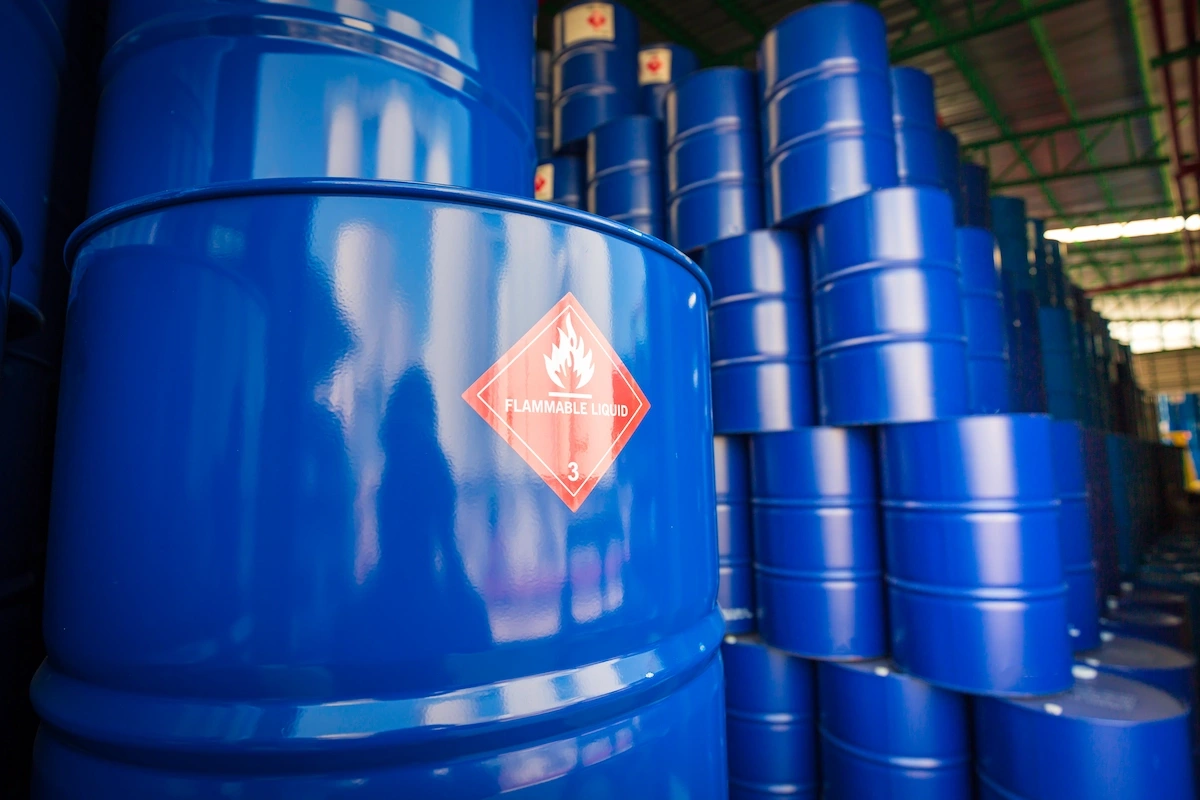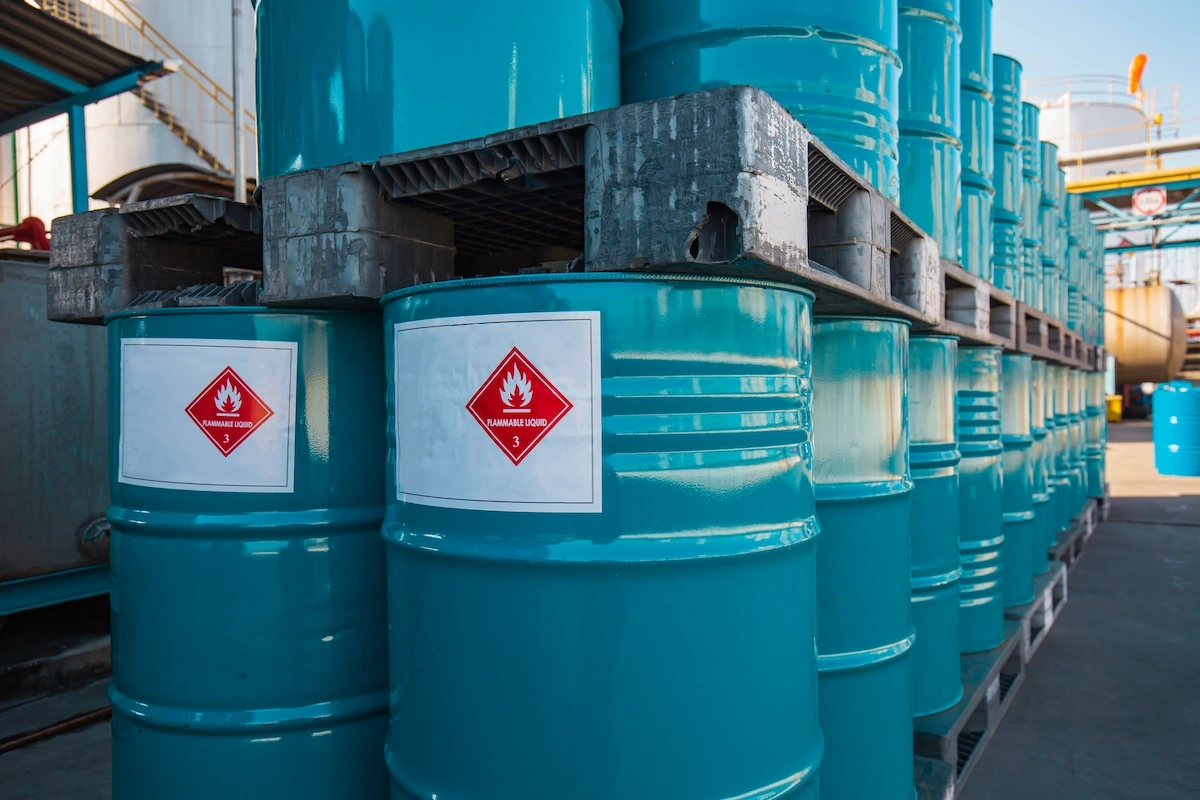
16-08-2025
9 Dangerous Goods and a Guide to Transport Them Safely
In logistics, whether land transportation with trucks or sea freight with vessels, the goods will be categorized into certain groups to get accurate treatment.
One of the goods needing special treatment in the delivery is dangerous goods. Dangerous goods are liquids, solids, or gases that potentially harm the environment and living creatures. To learn more about the goods, read this article until the end!
What Are Dangerous Goods?

Dangerous goods are items that can harm the environment, humans, or property because of chemical reactions, explosions, radiation, or poison. Due to this high risk, the delivery of dangerous goods must be treated distinctly, strictly monitored, and extra protected.
The characteristics of dangerous goods are flammable, corrosive, radioactive, infectious, toxic, and explosive. To overcome them, some countries have regulated the delivery laws, including Indonesia.
One of the laws regulating dangerous goods is Peraturan Menteri Perhubungan Nomor PM 16 Tahun 2021 about the treatment and loading of dangerous goods in the harbor (Tata Cara Penanganan dan Pengangkutan Barang Berbahaya di Pelabuhan).
This regulation explains that the Port Business Entity and the Port Operator Unit must provide a warehouse to store dangerous goods according to the International Maritime Dangerous Goods Code.
The purpose is to ensure the safety of goods delivery at the port and to establish procedures for handling dangerous goods at the port.
Read also: What Is Silica Sand and Its Function in Water Filtration
Classifications of Dangerous Goods

Dangerous goods are classified into nine categories according to their properties. Here is the complete explanation:
1. Class 1: Explosives
Class 1 items are goods that contain explosive substances and can be triggered by impact or heat. Examples of dangerous goods are explosives and firecrackers.
- Class 1.1: Easily explodes with fire.
- Class 1.2: Easily explodes with mass explosion danger.
- Class 1.3: Easily explodes with major danger projections.
- Class 1.4: Low fire and danger projections.
2. Class 2: Gas
Class 2 items include all gaseous materials, whether in liquid form or compressed gas. Gases pose a risk of evaporation, are dangerous if inhaled, and can ignite if exposed to sparks.
The examples include aerosols (such as spray paints, deodorants, and air fresheners), oxygen tanks, lighters, fire extinguishers, gas-powered engines, and butane tanks. Class 2 goods are also divided into subclassifications as follows:
- Class 2.1: Gas that is flammable when liquefied, dissolved under pressure, or compressed.
- Class 2.2: Inflammable gas in certain conditions.
- Class 2.3: Toxic gas (direct or indirect exposure).
3. Class 3: Flammable Liquids
Next, Class 3 items include flammable liquids, such as paints (including colored paints, thinners, coatings, and paint adhesives), perfumes, flavored liquids, flammable liquid-powered engines, adhesives, and hand sanitizers. Typically, these kinds of liquids are made of crude oil or alcohol.
4. Class 4: Flammable Solids
Flammable solids are classified into three categories: flammable solids (Class 4.1), spontaneously flammable solids (Class 4.2), and solids that are dangerous when wet (Class 4.3). Examples of Class 4.1 are matches, coal, and sulfur. Class 4.2 includes carbon, while Class 4.3 includes carbide and potassium phosphate.
5. Class 5: Oxidizing Substances and Organic Peroxides
The next classification is oxidizing substances and organic peroxides. Oxidizers can release oxygen that oxidizes or contributes to combustion in the event of a fire.
Examples of the items include oxygen generators, cleaning fluids or chemicals with high hydrogen peroxide content, adhesive activators, preservation products, and resin kits.
6. Class 6: Toxic and Infectious Substance
Class 6 items are toxic, toxic if inhaled, and infectious substances. Class 6.1 includes toxic substances, such as mercury, cyanide, and arsenic. Meanwhile, Class 6.2 includes infectious substances, such as viruses, bacteria, and many more.
7. Class 7: Radioactive
Radioactive materials are materials that emit radiation and are harmful to living creatures. Radioactives include nuclear materials, uranium, radioactive sources in fire detectors, and radiopharmaceuticals (medicines containing radioactive isotopes).
Read also: Fractional Distillation of Crude Oil and Its Final Products
8. Class 8: Corrosives
Corrosives are substances that can corrode or erode other objects when in direct contact. Examples of corrosive substances include chemical liquids or cleaners containing chlorine, acidic substances, wet cell batteries, and paint removers.
9. Class 9: Other Dangerous Goods and Lithium Batteries
Class 9 items are hazardous materials but are not included in the eight classes above. Examples include lithium batteries, electronic devices with lithium batteries, dry ice, and machines that use hazardous materials (e.g., compressed gas accumulators).
How to Deliver Dangerous Goods
If you plan to deliver items belonging to dangerous goods, here are some strategies you can use:
- Identify the dangerous goods based on the classifications.
- Avoid air freight because The International Air Transport Association has a strict regulation for air delivery of loading dangerous goods. Therefore, your cargo might be hindered from being transported.
- Check the cargo documents and make sure that the category and label are accurate.
- Pack the goods safely with extra protection.
- Choose the right and proper logistic services.
Regarding logistics services, especially for dangerous goods like crude oil and natural gas, Chandra Asri Group offers logistics solutions through PT Chandra Shipping International and PT Marina Indah Maritim.
This service is supported with 9 chemical and gas vessels of 106,650 DWT and ensures that every shipment follows the regulation. So, entrust the gas, crude oil, and industrial chemical delivery to Chandra Asri Group!
Read also: What Is Biogas? Benefits and Examples You Must Know